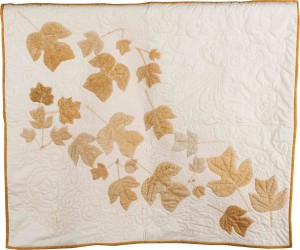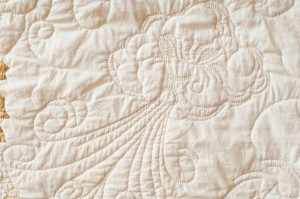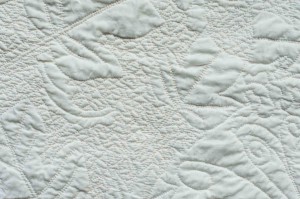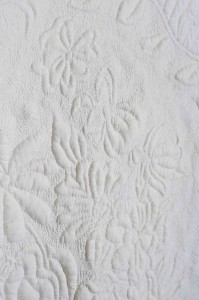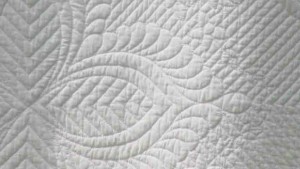The theme and title for this wall-hanging came about when Bettye’s daughter, Cindy Denton, noticed that the leaves on it looked like they were wind-blown. Bettye had not yet pounded any leaves in the upper right-hand corner, so they decided to give the wind a face and place it as a white-on-white element in that space. This piece is another example of the Cherokee leaf pounding technique in which a leaf is taped to fabric then hammered with a mallet until its chlorophyl creates a stain in the shape of that leaf.. Details such as stems and veins are highlighted by quilting stitches. (Kathy Hinkle, owner. Photos by Don Breland, courtesy of Merrill Stewart)
Bettye Kimbrell wanted her quilts to be as beautiful on the back as they are on the front. Those who turn her pieces over will see no knots, tangles or holes. Because of this aim she devised a time-consuming method of stuffing her trapunto pieces from the top rather than the back to avoid placing holes in the back that would need to be repaired. Except for the label and rod pocket she put on the back, her whole-cloth quilts look much the same on both sides, as you will see in the detail below.
42″ W x 46″ L (2013)

